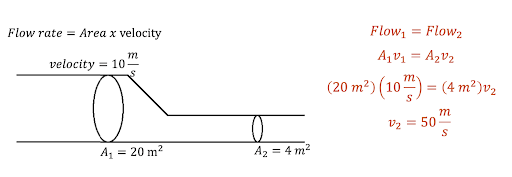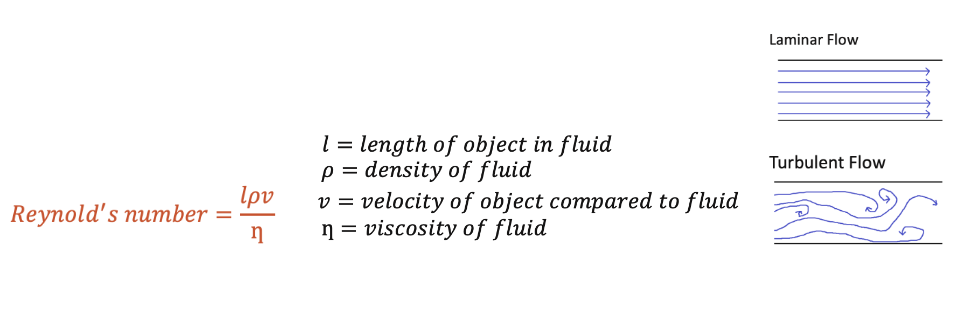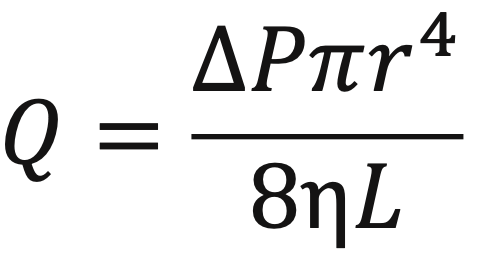The study of fluid dynamics is extremely important in medicine, as it relates to blood flow, needles, catheters, drug delivery, and so much more. It’s also a topic commonly tested in the Chemistry and Physics section of the MCAT, so you’ll want to be comfortable with the main concepts and equations. Let’s walk through the four most important things to know about fluid dynamics for the MCAT to help you cruise through these questions on test day.
1. Definition of Flow
2. Types of Flow
3. Bernoulli’s Principle
4. Poiseuille’s Law
MCAT Topic: Fluid Dynamics
1. Definition of Flow
Flow rate is how much fluid passes a point in a certain time and is equal to the area times velocity of the fluid. A fluid’s viscosity is its resistance to flow.
I like to think of a garden hose to illustrate this principle: a hose with a larger diameter will have a larger flow rate than a hose with a smaller diameter given that the velocity of the fluid is the same. It is also helpful to know that the amount of fluid that passes through one section of the hose is equal to the amount of fluid that passes through the other section, as illustrated below.
The hose has a smaller cross-sectional area on the right side, so the velocity must increase from 10 m/s to 50 m/s as the flow rate is the same on either side of the hose.
2. Types of Flow
Fluid flow can be described as either turbulent or laminar. In laminar flow, fluids travel in streamlined, regular paths. This commonly occurs in viscous fluids, or those with low velocity. The way water flows in a straight line through a garden hose demonstrates laminar flow.
In turbulent flow, fluids travel irregularly and cross paths, resulting in eddies and swirls. The flow of a river or smoke are good examples of turbulent flow. Fluids can be assigned a Reynolds number according to the equation below in which a higher value for Reynolds number indicates a more turbulent flow.
3. Bernoulli’s Principle
Bernoulli’s principle says that in a fluid flowing horizontally, points of higher fluid speed have lower pressure, and points of lower speed have higher pressure. This can be hard to wrap your head around, as it is counterintuitive at first!
The equation below describes Bernoulli’s Principle, which holds true for noncompressing fluids that flow continuously. The variables P1, h1, and v1 refer to the pressure, height, and speed of the fluid at point 1, while P2, h2, and v2 refer to the pressure, height, and speed of the fluid at point 2.
4. Poiseuille’s Law
Poiseulle’s law helps us describe the pressure-induced laminar flow through a tube. ΔP refers to the change in pressure, r is radius, ƞ is viscosity, Q is flow rate, and L is length.
A good example of Poiseulle’s law in action is the circulatory system and how changing the diameter of blood vessels can affect blood pressure; during exercise, blood vessels dilate to increase the blood flow to muscles and organs.
How can you keep track of all these fluid dynamics equations and formulas? First, download our free MCAT Formula and Equation Sheets. Then apply them to real practice—create a free Blueprint MCAT account to access a free practice MCAT full-length exam and a free trial of our self-paced MCAT course!






